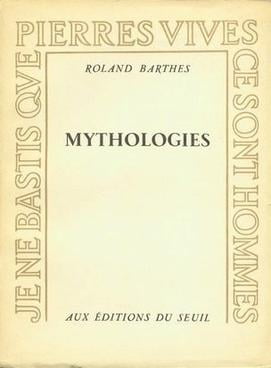Hey, have you ever heard the phrase the death of the author? You might have, and if you don’t work at TechRaptr, you might even know what it means. That is, it’s the idea that the author does not hold any unique authority over how the story is interpreted. Wow, that was super easy to explain, why do people get weird about it, well, because people will get weird about it, and I am simplifying it for very comical effect. Well, it was an idea written by Roland Barthes, pronounced Bartz, like the protagonist of Final Fantasy V, I know, good joke, we all know the protagonist of that game is Faris.
Ten years before The Death of the Author, Barthes compiled and released Mythologies, a book in which he describes at length the way that meaning is made out of repeated use of symbols. This is done by a set of examinations of things about which we have myths — probably the most well-known is the example of how red wine is seen during winter as warming, and summer as cooling, despite being the same wine served in the same condition. The myth of the wine is not the wine’s material conditions, but what the wine is.
This book is dense and complex and, saying it as someone who is reading the English translation of the French with sixty-five years of distance between us that has been influenced by Barthes’ ideas, it’s honestly a real struggle to properly ‘handle’ the ideas in it. Like, even within his space, Barthes was a writer fond of fantastically dense text, where single sentences often used cross-referenced phrases or terms that needed entire essays of their own to unpack. The result is that even when I try to explain the text I can be easily distracted by the question ‘am I explaining Barthes’ idea, or using Barthes to explain my own idea?‘ which is impressive when dealing with works of art, but remarkably annoying when dealing with academic text.
Typically, Mythologies comes up in the conversation about what does and doesn’t count as a text. This is foundational to textual analysis at university, because you need to understand that [a text] is a self-defined parameter, where you get to say ‘the text is this thing I’m currently pointing to.’ But the examples he gives in the essays include, yes, red wine, but also soap commercials, and first of all, he opens with professional wrestling.
And you may think ‘hang on, not really professional wrestling, they must have meant something different in 1957’ and I must assure you: No. No he did not. In the essay he makes it very clear it is about pre-arranged wrestling with a narrative that cares about communicating what is happening in the ring in its own reality, not any kind of proper wrestling ‘sport.’ Indeed, he rejects the idea that it’s a sport (which I don’t quite agree with, but whatever), and that it is instead a spectacle.
It is not the realities of wrestling that matters.
What wrestling is is what matters.
I entertained the idea of doing a rewrite of this fantastically dense essay to update the examples to modern actors and agents, but it’s simply too hard. The essay is four pages long and just my notes on it are four times that. It’s so deliberately tight that to explaine Barthes runs the risk of explaining more about myself. What’s shocking is the ways in which he draws attention to some ideas that still are true about professoinal wrestling, including specifically the way wrestling is lit.
It used to be that wrestling would, just as a matter of practicality for the storytelling in the 50s, be extremely bright, and lit from the top down. This meant that anyone at any angle around the ring could see the action clearly, and nobody would be in anyone else’s shadow, and also, as a side effect, everyone gets kind of ‘brightened’ and ‘lit up.’ Contrast becomes moreso. These days, that same ‘light from all sides’ and deliberate construction of light is really important still: You don’t want lots of dancing lights around the stage (unless you do), so shadows are all obliterated with carefully balanced lights.
The result is a spectacle of a myth transpiring in the brightest of lights; in which you do not need to know the story to know the story; where you watch two people become, for a time, sun gods bathing in their own radiant light.
